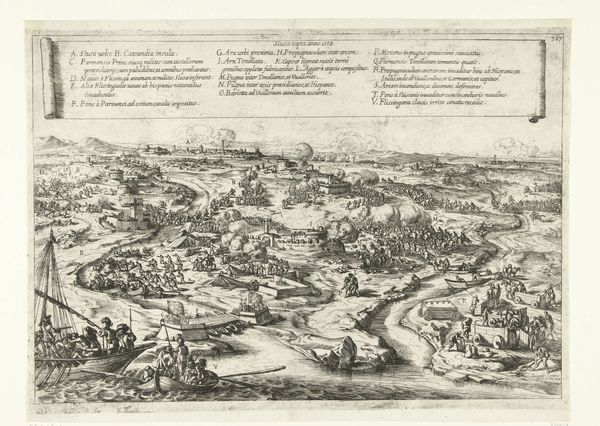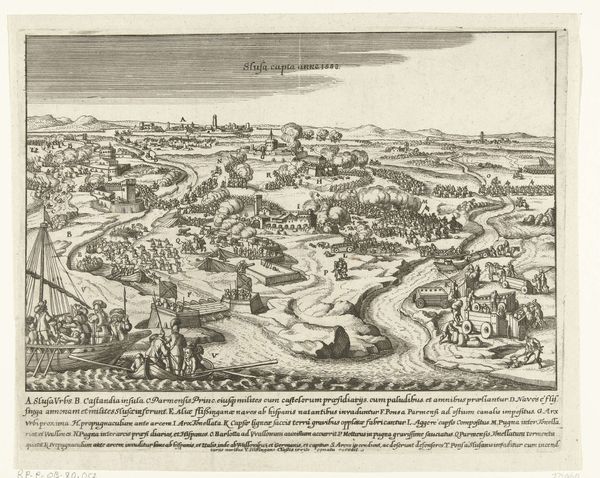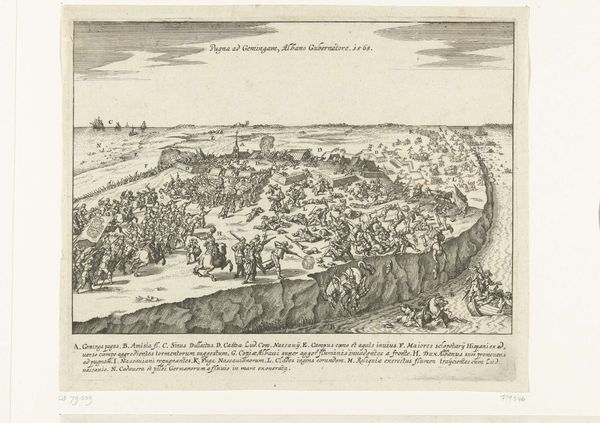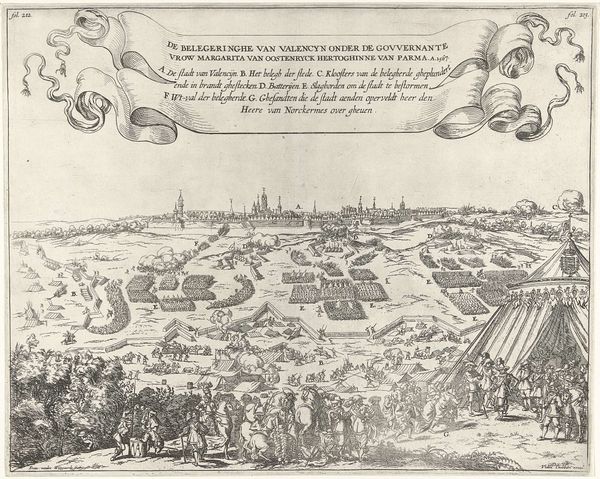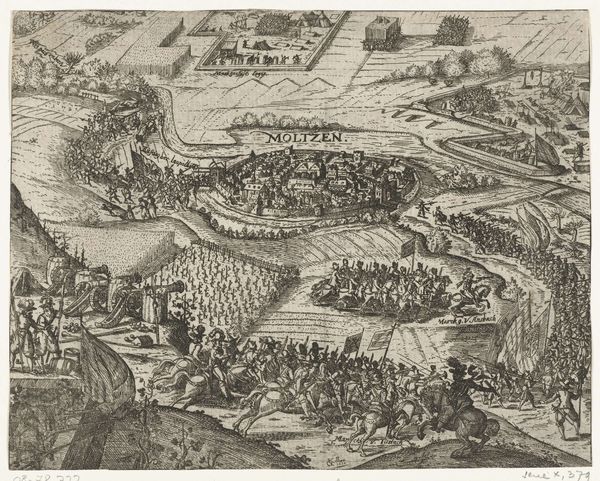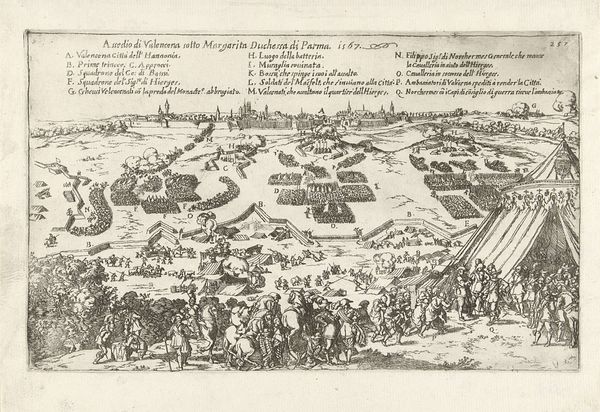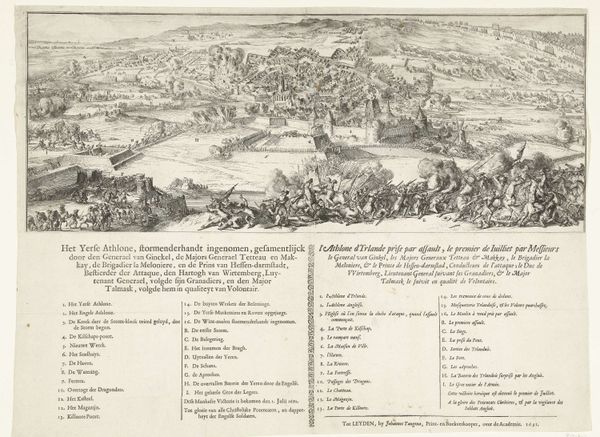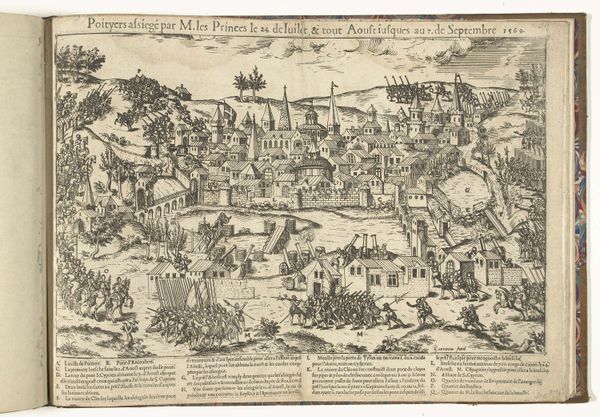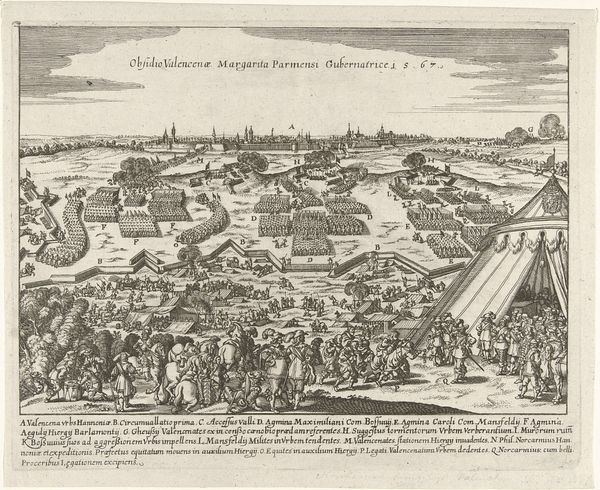
De Spanjaarden uit de Bommelerwaard verdreven door het doorsteken van de dijken, 1585 1645 - 1647
0:00
0:00
print, engraving
#
narrative-art
#
baroque
# print
#
landscape
#
history-painting
#
engraving
Dimensions: height 290 mm, width 410 mm
Copyright: Rijks Museum: Open Domain
Editor: This engraving, titled "De Spanjaarden uit de Bommelerwaard verdreven door het doorsteken van de dijken, 1585," from around 1645-1647, presents a panoramic view of a historical event. The detail is incredible, almost like a map teeming with tiny figures and ships. It's quite overwhelming to take it all in. What strikes you most about this piece? Curator: I'm immediately drawn to the means of production. Consider the labor involved in creating such an intricate engraving. The artist isn't just representing the event, they are *producing* a narrative through their craft, selecting which aspects of the conflict to portray. Think about the socioeconomic context; prints like this were tools to disseminate information and shape public opinion. Who commissioned this piece, and what message were they hoping to spread? Editor: So you're saying it's not just a depiction of the past, but an active participant in its interpretation? How does the materiality of the print itself—the lines, the tones, the paper—contribute to that? Curator: Precisely. The sharp lines and the way the scene is composed makes the event appear neat, even controlled. Yet, this neatness is deceptive, it masks the chaos and suffering that undoubtedly occurred. The choice of engraving as a medium, easily reproducible, also suggests a desire for broad dissemination and potentially propaganda. Is it objective documentation, or carefully crafted political statement presented for mass consumption? What evidence within the work sways your thinking either way? Editor: I never considered the social impact that material production could have. It changes the whole reading of the work! Curator: And consider, what labor did this artist directly benefit from? What class or privilege afforded him the leisure to focus on developing these artisanal, technical skills? Understanding these components transforms how we value this piece and allows us to more fairly contextualize its meaning within its social context. Editor: Seeing it that way really opens up new avenues for understanding. Thank you. Curator: And thank you for pushing me to examine it through a contemporary lens!
Comments
No comments
Be the first to comment and join the conversation on the ultimate creative platform.
